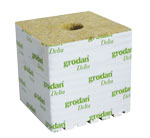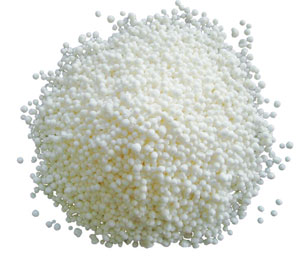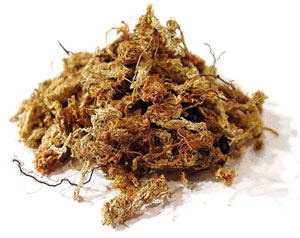GROWING SUBSTRATES
By definition, the substrate is the environment where the roots develop and protect themselves from the light, which they do not support: they are photosensitive. Thus, there are several growing substrates that can be classified in two distinct categories: soil and hydroponics.
On the other hand, the so-called modern culture based onhydroponics (or literally from the Greek: water work) concerns plants growing in an inert and sterile substrate such as clay balls, rock wool, coconut fiber, sphagnum moss, vermiculite, pozzolan... These different substrates do not contain nutrients and require constant and evolving fertilizer inputs through water. Only bio-mineral fertilizers are to be prescribed the climatic conditions within its growing space and the capacity of the plants to assimilate the contributions according to the stage of growth or flowering, in order to program its tides and their time with the help of a manual, digital or cyclic programmer. In concrete terms, the more the plants evolve, the more their water and fertilizers are important.
The soil

The so-called traditional culture refers to the soil which requires little or no fertilizer, depending on its growth. The fertilizers used in soil, in powder or liquid form, can be of biological or bio-mineral origin. In fact, in the case of outdoor cultivation in the ground, fertilizer is not mandatory because the plants can spread their roots without limit to meet their essential nutrient needs for their growth and flowering/fruiting.
On the other hand, when growing in soil indoors, the plants are enclosed in pots and must therefore be carefully monitored for nutrient inputs. Already stabilized at a pH between 6.0 and 6.4, the "ready-to-use" soils offered in professional garden centers are composed in most cases of different forms of peat, humus and perlite (an element that oxygenates the mixture and ensures good drainage). A "light" potting soil containing few nutrients is to be preferred at the first potting or during the whole growth and flowering cycle, if you want to fertilize at your convenience or if you want to grow in soil with biomineral fertilizers for example.
Thus, a richer soil, which can be envisaged from the first repotting, logically leads to a spacing out of the nutritive contributions. Generally speaking, two to three repottings are necessary for a crop in soil. During the passage to flowering or fruiting, it is advised to use a pot two to three times larger than the one used for growth. A simple principle to remember: the larger the volume of soil brought in, the greater the root mass and the more productive the plants are! Easily water soluble and can remain in a solution (stirred regularly) for about ten days. However, some fertilizer manufacturers (such as GHE) have developed bioponics, a certified organic range of fertilizers (OMRI standards) that can be used and operational in hydroponics. It is possible to choose your potting soil well.
The clay ball

The most common inert medium used in home hydroponic systems, expanded clay is the medium for growing plants clay ball expanded clay is the simplest and most practical growing medium (reusable from one harvest to the next) for both beginners and advanced growers. It has a great capacity of water drainage, which offers the roots a great oxygenation. They allow the use of "ebb and flow" irrigation, either continuously or alternately, without the risk of saturating the plants with water and fertilizer. Tidal irrigation (15/15 minutes for example) is also very effective to maximize oxygenation to the roots and force them to develop to draw water. For more information go to our page What is the clay ball?
The rock wool
This growing medium is also widespread, especially among horticultural professionals; the majority of tomato crops from the food industry are grown on this substrate The rock wool tomato substrate is known for its ability to retain water and nutrients, so its irrigation requires great attention from the grower as it must be programmed and spaced evenly over the lighting time of the plants, to meet their needs. In practice, the informed grower will take into account the volume of rockwool used, of mould of these (development of pathogenic mushrooms). The rockwool, before receiving plants must be neutralized by letting it soak 24H in a solution between 5 and 5,5 pH, because it is naturally basic. Caution: rockwool contains particles that are irritating to the respiratory tract (humidify before handling).
The coconut fiber
Very cheap and airy, coconut fiber is an ecological and renewable substrate, obtained from coconut husks. It contains remarkable antifungal and antibacterial properties The coconut fiber it is biodegradable and presents a good alternative to rock wool, which has a similar use. Coir fiber can be mixed with 30% perlite or clay ball to maximize its drainage capacity. Resistant to rotting, it requires nevertheless a particular attention at the level of the automated irrigation: a proven dryness would involve an unfortunate acidity of the medium and a development of deficiencies in the plants. Moreover, by its medium of origin and unless it is already "ready to use" (some brands propose it already treated), the coconut fiber must be buffered thanks to the use of a "buffering agent" which will come to dissolve all the salts which it contains and prepare it effectively to receive the plants.
Hydroponics: Inert substrates
Clay beads
The 8-16 millimeter diameter beads provide excellent structure for plant roots and beneficial bacteria retention! Use: Soak them before use. If too high, lower the pH.
The cLAY BEADS Gold Label have been designed with the purest clay. For the health of your plants and the environment, they are baked in an open oven, running on clean fuels.

Perlite
Hydroponic growing medium and essential component to any good soil mix used in professional horticulture. Perliteis an expanded volcanic rock, essential to any soil and coco fiber (up to 30%). It allows the optimal oxygenation of the root system. Nevertheless, it requires some precautions of use in the dry state. Wearing a mask is recommended because it is irritating to the respiratory tract. When wet, it remains harmless. But what is perlite in detail?

Sphagnum of chili
Plant substrate unfermented, unenriched and pH 4. Organic matter: 70% of the raw product, dry matter 70%. Sphagnum moss, native to Chile, is the essential element in the constitution of any substrate because it has great anti-bacterial properties. It has a great capacity to retain water (20 times its weight, very practical when leaving on vacation!), and also has the power to regenerate, and therefore develop. It is very beneficial in the context of a culture of orchids, repotting germinationcuttings...

Find all our councils for your culture of interior:
- Councils culture of interior: The Light
- Advices indoor growing : Air
- Councils culture of interior: The Substrate
- Advice for indoor growing : Water and fertilizers
- Growing tips for indoor plants : Germination and Cutting
- Growing tips for indoor plants : Growth
- Growing tips for indoor plants : Flowering
- Growing tips for indoor plants : The growing room
- Tips for indoor growing : Systems
- Growing tips for indoor plants : Water control
- Growing tips for indoor plants : Aquaponics
- Growing Tips: Accessories